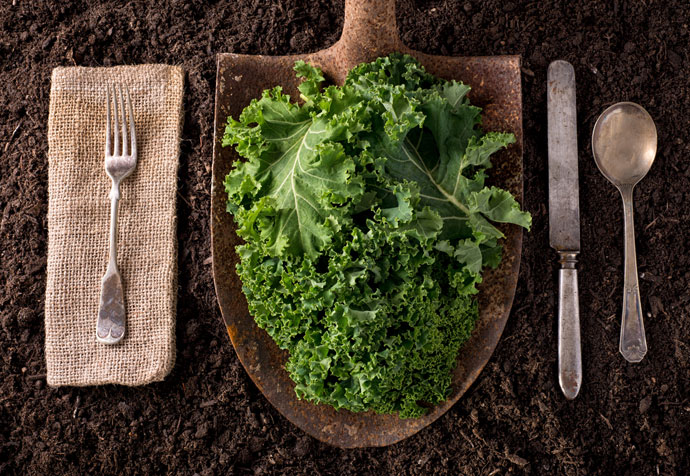12 Health Benefits Of Kale That May Surprise You
Even after several years of holding the coveted spot as the trendiest vegetable, kale has yet to be dethroned as king of the brassicas. Like Zeus sneering down from the heights of Mount Olympus, kale looks down on all the other leafy greens, daring them to challenge its superiority. You may wonder what gives kale the right to be so snooty — after all, it’s just a bunch of leaves, right?
Well, not really. As sick as you may be of hearing it, kale is actually a nutritional powerhouse, consistently earning it a top spot as one of the most nutritious vegetables. Here are 12 reasons why.
1. It’s the Most Antioxidant-Packed of the Greens
According to Men’s Health, kale has a total of 1,770 units on the ORAC chart, making it the best green in terms of antioxidant content; spinach has less than 1,500 units on the same scale. (ORAC stands for Oxygen Radical Absorbance Capacity; the chart lists foods based on their antioxidant values.)
2. Kale Contains 45 Flavonoids
A 2009 study revealed that kale is chock-full of flavonoids, which have antioxidant and anti-inflammatory effects. Kale has the broadest range of antioxidants among the brassicas, says the Washington Post.
3. Kale is Higher in Calcium than Milk
Per calorie, kale has more calcium than milk, according to MindBodyGreen.
4. It’s Higher in Iron than Beef
As if beating milk wasn’t enough, kale has shown that it’s superior to meat. According to MindBodyGreen, kale has more iron than beef per calorie, making it a good staple for vegetarians and vegans.
5. It Has More Vitamin C than Oranges
A cup of chopped kale holds a whopping 134 percent of the recommended daily value of Vitamin C, says Shape; that means gram for gram, it has twice the Vitamin C of an orange. Will kale ever stop showing off?
6. It Has Tons of Vitamin A
With 133 percent of your daily Vitamin A, kale has more of this vitamin than any other leafy green, according to Shape. Vitamin A promotes cell growth, a health immune system and good vision, so if nibbling on carrots doesn’t appeal to you, start nibbling on kale instead.
7. It May Help Prevent Cancer
In 2012, the Washington Post reported that kale might reduce the risk of certain types of cancer (including protecting against breast cancer), as well as inhibit the production of already existing colon cancer cells.
8. Kale Is Fatty
It contains Omega-3 fatty acids in the form of alpha-linoleic acid, according to Shape. Omega-3s are good for your brain and heart; they may also prevent cancer and inflammatory bowel diseases, according to the Harvard School of Public Health.
9. It’s Good for Diabetics
According to NationalKaleDay.org, eating leafy greens helps balance blood sugar. Kale in particular is very high in fiber, so it helps slow the rise of blood sugar, making it easier for diabetics to stay in control.
10. It Has Lots of Fiber
Kale “has a good amount of fiber to help keep your bowel movements regular,” says the National Institutes of Health. Foods high in fiber also help you feel fuller longer, so by eating kale, you’re keeping your belly full and your bowels regular — it’s a win-win!
11. ‘K’ Stands for ‘Kale’… and Vitamin K
Vitamin K helps keep bones strong and blood healthy, according to NIH. Without this vitamin, blood wouldn’t clot; bruising and bleeding can occur in people with a Vitamin K deficiency.
12. It’s Even Healthier When Eaten with Other Foods
Despite all of its magical properties, kale is less effective when eaten alone, says Shape. When it’s combined with fats like olive oil or Parmesan cheese, however, its fat-soluble carotenoids are more accessible to the body. In addition, the acid in lemon juice makes the iron in kale more “bioavailable.” Since kale is known for being tough and needing some massage time — preferably in oil — to become tender and edible, it’s a marriage made in brassica heaven.










































